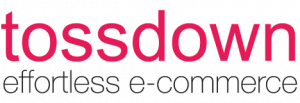The last few years have seen a sharp rise in e-commerce activity, especially in the food business online and beverage industry. The COVID-19 pandemic has changed how, when, and where we shop, and digital presence is now more important than ever.
Canada alone saw growth of more than 75% in 2020 as mandatory isolation measures and mask mandates urged shoppers to rely more heavily on online retailers. This trend has only gained further prominence in 2021, with Canadians spending CAD 86.52 billion online, up 12% from the previous year.
Even with the pandemic now behind us, having your food business online is a profitable decision. According to Statista, 34% of consumers claim to spend up to $50 per order when ordering online. If you want to maintain your business’s profitability and growth, we’re here to help you get started.
Set up an Online Ordering System
The first step is to set up an online ordering system for your food business. There are 3 ways you can do this.
- Build your own website, using a website builder or subscribing to tossdown’s services to process your orders.
- Use a third-party delivery service, such as UberEats or HelloFresh.
- Use a third-party delivery service with POS integration, such as CAKE.
We’ll walk you through these options to help you select the best ordering system for your restaurant. Once your customers have finished their ready meals (or instant ramen, for that matter) they’ll be ready to try something different, and you’ll have your food ordering system in place to take their order.
1. Build your own website
One of the main advantages of having your own website is that customers can order directly from you, meaning you keep the process in-house. You have complete control over customer service and the ability to bounce back from a negative customer experience. In short, you’re in control, you own your name, and you maintain direct contact with your customers.
You can use a website builder or rely on tossdown to do it for you. tossdown is an affordable e-commerce platform that offers commission-free sales and orders, inventory management solutions, and real-time data that caters to your unique business needs. It’s financially sustainable in the long-run, without the added expense of costly plugins or add-on apps.
2. Use a third-party delivery service
If you’re not comfortable with managing orders and deliveries, you can opt for a third-party delivery service, such as UberEats or HelloFresh. Once you have decided which app you want to use, you can head over to their website and fill out a basic signup form with details about your restaurant.
The main disadvantage of using a third-party app is that they take a cut of your revenue. Interestingly enough, customers are not only fully aware of this, but also prefer to order directly from the restaurant so their payment goes straight to the business.
3. Use a third-party delivery service with POS integration
If you’re dealing with a complex situation managing numerous orders (or numerous orders from different restaurants) at the same time, combining a third-party delivery service with POS integration is the best way to go.
To do this, you need an integration app such as CAKE to act as an intermediary between your third-party app and your POS. Apps such as CAKE or Checkmate help you manage your whole restaurant in one place, streamline your online ordering, and improve e-commerce checkout. The whole process becomes faster, hassle-free, and more efficient – the perfect choice for extremely busy restaurants.
The main disadvantage of using third-party apps with POS integration is that it’s very expensive. You have to pay for both the third-party delivery service and the integration app, making it a pricey option which might be an issue for startups and young businesses.
Prepare for Online Orders
It might seem scary to take your food business online, but here are a few tips to help you get started and prepare for online orders. The top 3 things you must consider are promoting your online business, preparing your staff, and optimizing your menu.
1. Promote your online business
You’re no stranger to marketing if you already have a thriving offline business. However, if you want to drive traffic to your online store, your strategy needs to be a little different. The first thing you’ll need to do is boost your digital engagement by building your social media presence. Make sure you do most of your marketing on channels where your target audience is most likely to hang out.
Other strategies include creating interesting, useful content, partnering with complementary brands, and leveraging your offline store. If your brick-and-mortar business has excellent brand recognition, you can use it to drive customers to your online store.
2. Prepare your staff
It’s also extremely important to have in place clear job descriptions to communicate roles and responsibilities, performance standards, and scope of work. Confusion around the process will lead to delays and errors, and will negatively impact customer satisfaction.
Smooth restaurant operations and service is the key to having a successful online store, especially in the food and beverage industry where you’re frequently handling perishable items and food products.
3. Optimize your menu
When it comes to online ordering and deliveries, you need to provide dishes that travel well (we’re looking at you, pizza!)
It’s usually a good idea to offer a condensed version of your usual menu to make it easier for your staff and customers. You must choose dishes that can hold their shape when they travel, or those that are easy to eat at home. If you’re not sure, you can always test it out and see what works and what doesn’t – think of it as a learning curve for everyone!
Things to Consider
You must obtain necessary permits and licenses to avoid hefty fines or legal action. Failure to comply with state laws and government-mandated regulations can cause serious problems for your business. For a food brand, it’s essential to look into food regulations and safety, licensing requirements, and possibly a certificate of occupancy.
1. Food Regulations
All establishments serving food are expected to pass regular health inspections. The government regulates food and food ingredients to ensure that these businesses provide products that are safe, sanitary, wholesome, and honestly labeled. Be sure to carefully review the laws and regulations surrounding food in your region and understand how they apply to your unique set of circumstances.
2. Licensing Requirements
Under the Safe Food for Canadians Act (SFCA) and Safe Food for Canadians Regulations (SFCR), many food brands must carry a license to conduct food-related activities. To protect consumers against unsafe, impure, or spoiled food products, the government expects food businesses to comply with stringent SOPs that ensure safety and quality.
To learn whether you need a license or not, you can explore the licensing interactive tool. It helps you find out your licensing requirements just by answering a few simple questions.
3. Certificate of Occupancy
If your online store runs out of a physical location, you typically require a Certificate of Occupancy (C of O). This is a document issued by the Canadian government certifying that a location is suitable for occupancy, and is granted when the property has passed required inspections and is adhering to state and local building laws.
Before your business is granted a certificate of occupancy, it will have to pass some common inspections or approvals. These include:
- Structural inspections
- Electricity and plumbing
- Fire and life safety systems
- Architectural safety requirements
Conclusion
The post-pandemic world is an uncertain time for businesses of all shapes and sizes. If we know one thing for sure, it’s that consumers enjoy having the option of ordering online. In order to get your food business up and running, you must think about the things we mentioned above.
If you already have a thriving brick-and-mortar store, the first step is to set up an online ordering system. Do you want to use the services of a website builder? Use a third-party delivery service? Use a third-party delivery service with POS integration? Think carefully about your business and its unique set of needs to select the best online ordering system for your restaurant and start selling online!


